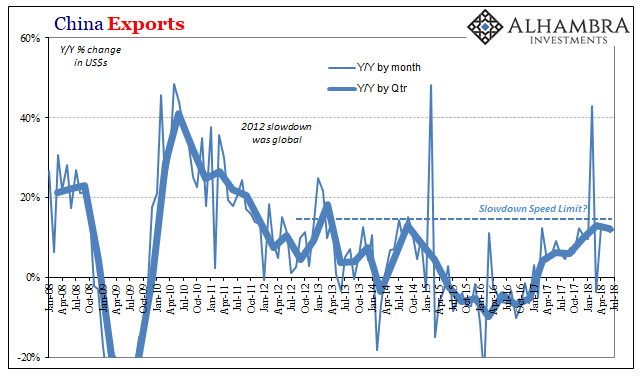Fritz Zurbrügg, Vice Chairman of the Governing Board of the Swiss National Bank
News conference of the Swiss National Bank, Berne, 15.06.2017
Introductory remarks by Fritz Zurbrügg
In my remarks today, I will present the key findings from this year’s Financial Stability Report, published by the Swiss National Bank this morning. In the first part of my speech, I will look at the situation of the big banks, focusing on the progress made in implementing the revised ‘too big to fail’ regulations (TBTF2) that came into effect almost a year ago. In the second part of my remarks, I will outline our current assessment of the situation at domestically focused banks.
Big banks: Capital situation further improved – SNB welcomes regulatory reforms
Let me start then with the big banks and the TBTF2 regulations. The revised regulations are designed to resolve the ‘too big to fail’ issue in Switzerland, so that systemically important banks no longer have to be bailed out with taxpayers’ money in the event of a crisis.
The TBTF2 regulations rest on two complementary pillars. First, they are aimed at strengthening the resilience of systemically important banks in a going-concern perspective. They therefore specify higher requirements for going -concern capital in particular, thereby reducing the likelihood of a systemically important bank getting into financial distress. Second, if a systemically important bank nevertheless gets into financial distress – this is called the gone-concern perspective – the regulations provide a framework for orderly resolution, ensuring the continuation of systemically important functions without the use of public funds. To this end, the regulations stipulate requirements both for loss-absorbing capacity in a gone-concern perspective and for resolution planning.
What progress have the two big banks made in implementing the TBTF2 regulations?
Regarding the first pillar, resilience, both big banks have improved their loss-absorbing capacity in a going-concern perspective since the last Financial Stability Report. With this further improvement, Credit Suisse and UBS are on track to meet the final capitalrequirements. 1 In a going-concern risk-weighted perspective, both banks are already fully compliant. However, a further improvement is necessary with respect to the leverage ratio. The SNB acknowledges the progress made in improving the capital situation. Achieving full compliance with the TBTF2 regulations will further strengthen loss-absorbing capacity. This is necessary as the big banks’ loss potential relative to their capitalisation continues to be substantial, when measured on the basis of the stress tests carried out by the SNB as well as the losses experienced during the last financial crisis. Given the big banks’ significance to the Swiss economy, it is important that they remain adequately capitalised in the event of such losses occurring.
This brings me to the second pillar of the TBTF2 regulations – resolution. Here, too, both big banks have made progress. On the one hand, since June 2016, Credit Suisse and UBS have significantly improved their gone-concern loss-absorbing capacity. To this end, they issued further bail-in bonds, which can be converted into equity in the event of impending insolvency. On the other hand, the two big banks have implemented key organisational measures. For instance, they have both set up Swiss subsidiaries that contain their systemically important functions, including, in particular, domestic deposit and lending business.
In order to resolve the ‘too big to fail’ issue in Switzerland, more progress also needs to be made in the area of resolution. This will involve, first , further improvements in gone-concern loss-absorbing capacity in a gone-concern perspective, as stipulated in the regulations and, second, further progress in drawing up robust resolution plans. By end-2019, the big banks will need to demonstrate that they would be able to maintain their systemically important functions in Switzerland without interruption in the event of impending insolvency. The resolution plans will also need to meet foreign regulatory requirements.
Domestically focused banks: adequate resilience, despite substantial increase in mortgage exposure
will now turn to domestically focused commercial banks, whose main business is in lending and deposit-taking. I would like to highlight three key developments at these banks.
First, domestically focused banks further increased their risk exposure in 2016. Mortgage growth at these banks remained strong. Moreover, their interest rate risk exposure from maturity transformation continued at high levels. In addition, they took on greater affordability risks and the share of new mortgages with a high loan-to-income ratio reached a new peak. All this took place against the background of high imbalances on the Swiss mortgage and real estate markets. Although these imbalances declined slightly in 2016, they are still at levels similar to those in 2014, when the sectoral countercyclical capital buffer (CCyB) was set at 2%.
Second, the average interest rate margin of domestically focused banks decreased in 2016, having stabilised at a low level in the previous year. This renewed reduction in the interest margin highlights the considerable pressure which these banks continue to face in their core business, in an environment of exceptionally low interest rates. At the same time, however, banks’ net interest income and reported profits increased. This is mainly because the growth in mortgage volume more than offset the reduction in the interest rate margin.
Third, the resilience of domestically focused banks remains adequate. In terms of both risk-weighted assets and leverage ratios, they are well capitalised by historical standards, and their capital surpluses currently exceed the regulatory minimum requirements. SNB stress tests indicate that the surpluses at most of these banks are large enough to absorb losses under adverse scenarios.
That is the SNB’s evaluation of the current situation at domestically focused commercial banks; but what about our assessment of the outlook?
Here, the predominant feature is again the margin pressure that I have just mentioned. The pressure on interest rate margins will remain strong as long as interest rates remain exceptionally low. Thus, there will be strong incentives for banks to take on more risk. In the short term, an increase in affordability risk or interest rate risk may help to prevent a further decline in profit ability. However, it would make banks more vulnerable to a large upward interest rate shock and to a correction on the mortgage and real estate markets.
Greater risk-taking in lending could also lead to a renewed increase in momentum on the mortgage and real estate markets. This applies particularly to residential investment property, where upward pressure on prices could remain strong. If interest rates rise, there is the risk of a substantial price correction. This could result in credit losses at the banks that provide funding for such investors.
This highlights the importance of the capital surpluses currently held by the domestically focused banks. Going forward, banks should set their risk appetite and their capital planning so as to ensure that they can absorb the losses that would arise under highly unfavourable but possible scenarios. Even under such scenarios, the banks must be able to perform their economically important functions – especially that of providing credit to the economy.
The SNB will continue to monitor developments on the mortgage and real estate markets closely, paying particular attention to the residential investment property segment as well as to banks’ risk-taking in mortgage lending. In parallel, it will continue to regularly reassess the need for an adjustment of the CCyB.
Are you the author? Previous post See more for Next postTags: newslettersent





































